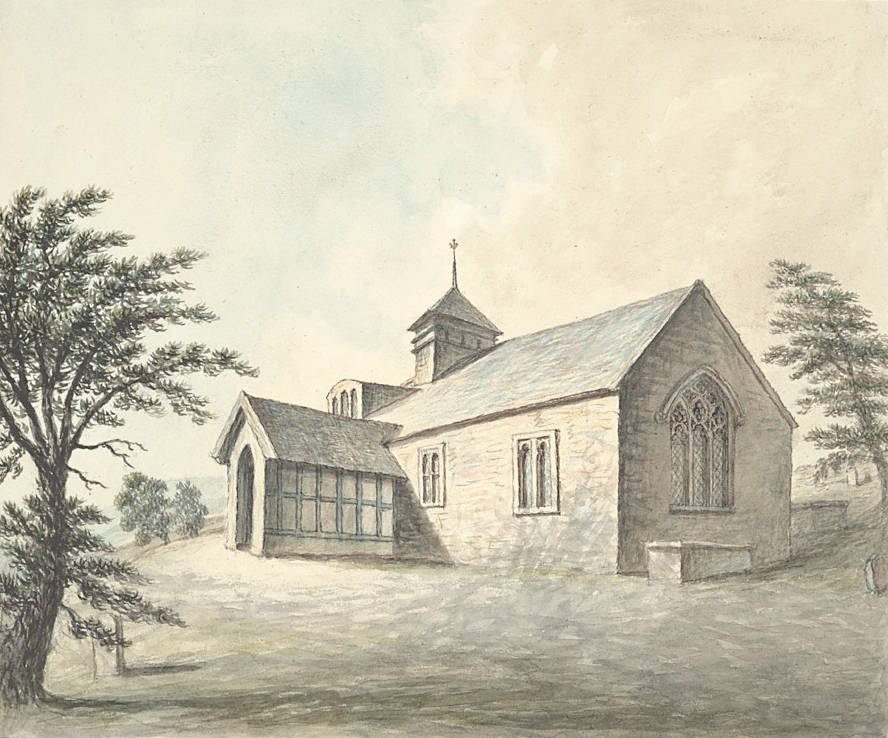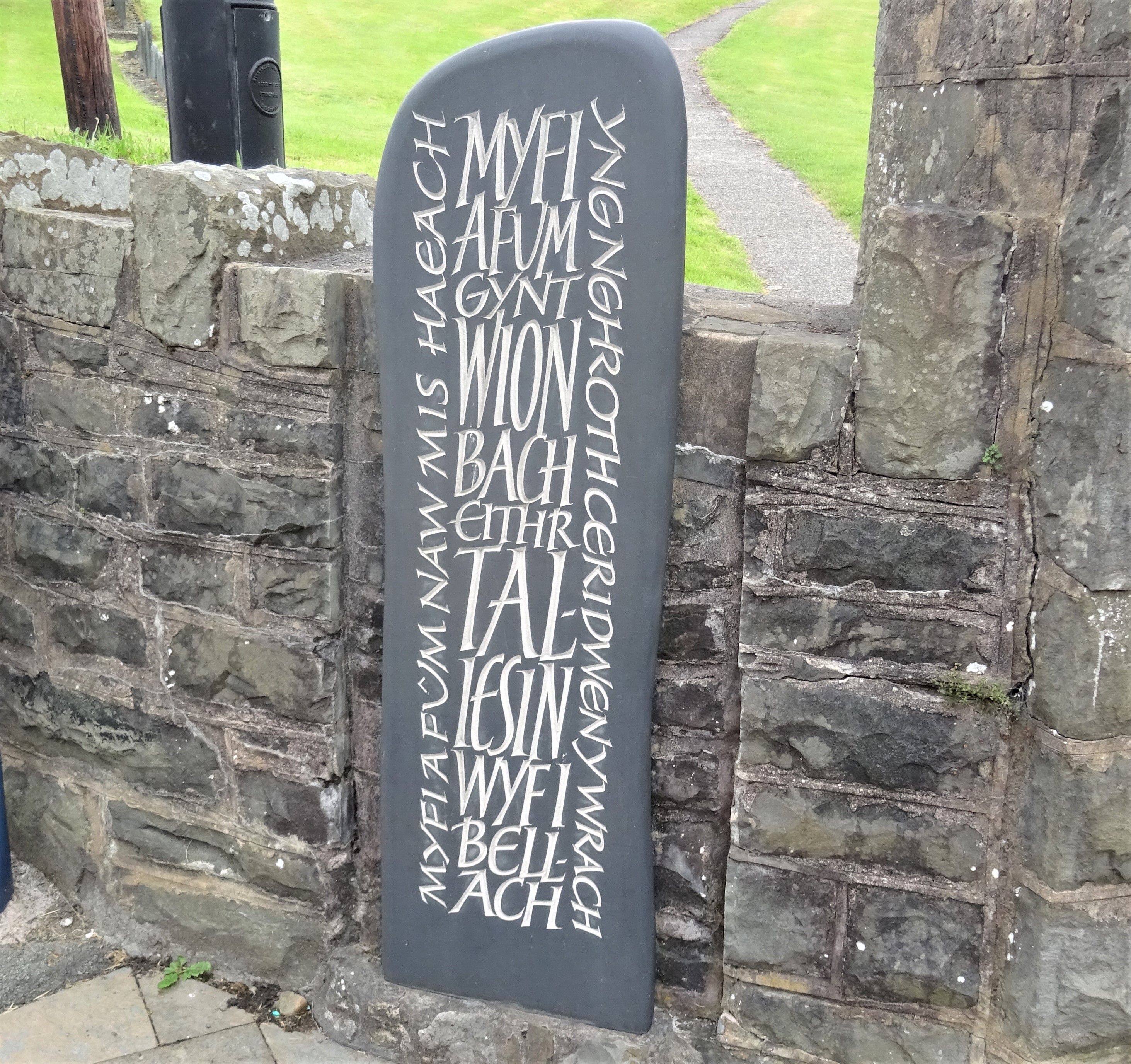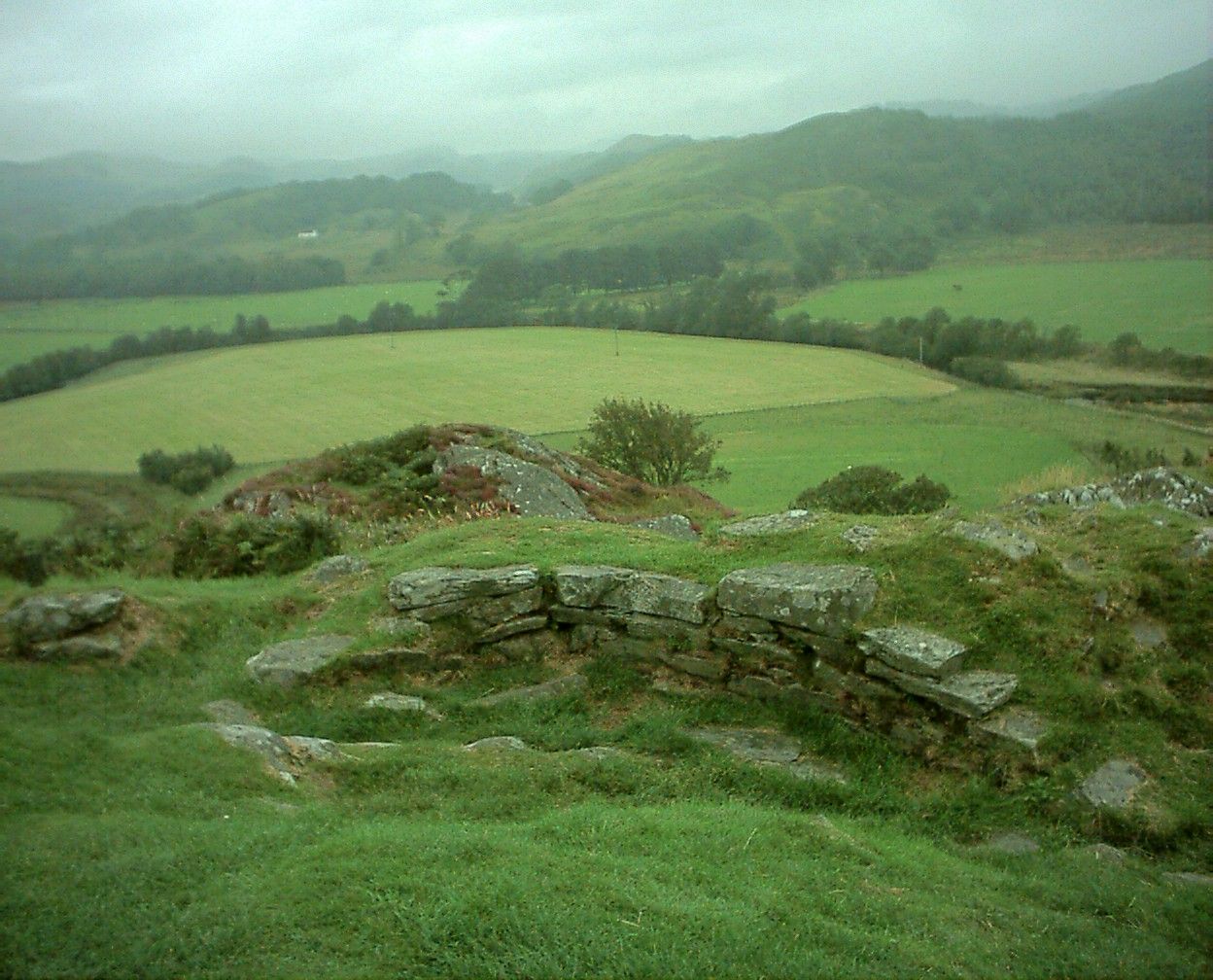|
Pentre Camp
Pentre Camp is an Iron Age hillfort, near the hamlet of Llangynyw and about north-east of Llanfair Caereinion, in Powys, Wales. It is a scheduled monument. Description The fort is an oval, about by , enclosing an area of . There are several concentric ramparts: three in the north and west and five elsewhere. There are traces of further ramparts in the south and west. In the east the third and fourth ramparts are linked to form an entrance passage. All the banks are low, and may have originally been low, as foundations for timber defences. There is a spring (still issuing water) a short distance away, at the base of the northern slope of the fort; this was probably of practical importance in the fort's location. There is speculation that the field boundary wall crossing the northern rampart may be part of the original revetment. See also * Hillforts in Britain Hillforts in Britain refers to the various hillforts within the island of Great Britain. Although the earliest such co ... [...More Info...] [...Related Items...] OR: [Wikipedia] [Google] [Baidu] |
Llangynyw
Llangynyw (also Llangyniew) is a hamlet and community in Montgomeryshire, Powys, mid Wales. It is located on a hill inside a bend in the River Banwy, approximately two miles north-east of Llanfair Caereinion. The community includes the hamlet of Pontrobert. The focus of the hamlet is the Parish Church of St. Cynyw, which dates from between 1450 and 1500 and is a Grade II* listed building. The parish of Llangynyw had a population of 551 when the 1801 census was taken, 430 in 1901 Events January * January 1 – The Crown colony, British colonies of New South Wales, Queensland, South Australia, Tasmania, Victoria (Australia), Victoria and Western Australia Federation of Australia, federate as the Australia, ..., and 295 in 1971, increasing back to 582 at the 2011 census. Pentre Camp, an Iron Age hillfort, is near the hamlet. References External linksLlangyniew Community Council website [...More Info...] [...Related Items...] OR: [Wikipedia] [Google] [Baidu] |
Hillfort
A hillfort is a type of earthwork used as a fortified refuge or defended settlement, located to exploit a rise in elevation for defensive advantage. They are typically European and of the Bronze Age or Iron Age. Some were used in the post-Roman period. The fortification usually follows the contours of a hill and consists of one or more lines of earthworks, with stockades or defensive walls, and external ditches. Hillforts developed in the Late Bronze and Early Iron Age, roughly the start of the first millennium BC, and were used in many Celtic areas of central and western Europe until the Roman conquest. Nomenclature The spellings "hill fort", "hill-fort" and "hillfort" are all used in the archaeological literature. The ''Monument Type Thesaurus'' published by the Forum on Information Standards in Heritage lists ''hillfort'' as the preferred term. They all refer to an elevated site with one or more ramparts made of earth, stone and/or wood, with an external ditch. Many ... [...More Info...] [...Related Items...] OR: [Wikipedia] [Google] [Baidu] |
British Iron Age
The British Iron Age is a conventional name used in the archaeology of Great Britain, referring to the prehistoric and protohistoric phases of the Iron Age culture of the main island and the smaller islands, typically excluding prehistoric Ireland, which had an independent Iron Age culture of its own. The parallel phase of Irish archaeology is termed the Irish Iron Age. The Iron Age is not an archaeological horizon of common artefacts but is rather a locally-diverse cultural phase. The British Iron Age followed the British Bronze Age and lasted in theory from the first significant use of iron for tools and weapons in Britain to the Romanisation of the southern half of the island. The Romanised culture is termed Roman Britain and is considered to supplant the British Iron Age. The tribes living in Britain during this time are often popularly considered to be part of a broadly-Celtic culture, but in recent years, that has been disputed. At a minimum, "Celtic" is a linguistic ter ... [...More Info...] [...Related Items...] OR: [Wikipedia] [Google] [Baidu] |
Hillfort
A hillfort is a type of earthwork used as a fortified refuge or defended settlement, located to exploit a rise in elevation for defensive advantage. They are typically European and of the Bronze Age or Iron Age. Some were used in the post-Roman period. The fortification usually follows the contours of a hill and consists of one or more lines of earthworks, with stockades or defensive walls, and external ditches. Hillforts developed in the Late Bronze and Early Iron Age, roughly the start of the first millennium BC, and were used in many Celtic areas of central and western Europe until the Roman conquest. Nomenclature The spellings "hill fort", "hill-fort" and "hillfort" are all used in the archaeological literature. The ''Monument Type Thesaurus'' published by the Forum on Information Standards in Heritage lists ''hillfort'' as the preferred term. They all refer to an elevated site with one or more ramparts made of earth, stone and/or wood, with an external ditch. Many ... [...More Info...] [...Related Items...] OR: [Wikipedia] [Google] [Baidu] |
Llanfair Caereinion
Llanfair Caereinion is a market town and community in Montgomeryshire, Powys, Wales upon the River Banwy (also known as the River Einion), around 8 miles west of Welshpool. In 2011 the ward had a population of 1,810; the town itself had a population of 1,055 according to Nomis. History Its name is a combination of Welsh ' "church" + ' "Mary" and ' "fort" + ', a personal name, meaning "the church of Mary tthe fort of Einion". The town is built upon the site of an old Roman fort. The site of the Battle of Maes Moydog (1295) is nearby. In 1758 the town was almost completely wiped out by a major fire. Geography The town is close to Welshpool and not far away are the towns of Machynlleth and Llanfyllin. The town acts as a major centre for a lot of scattered hamlets and villages around the community. The electorate of the community only places it fourteenth in the rank of the county's eighteen towns. Llanfair Caereinion is classified as an area centre in the Powys Unitary Develo ... [...More Info...] [...Related Items...] OR: [Wikipedia] [Google] [Baidu] |
Powys
Powys (; ) is a Local government in Wales#Principal areas, county and Preserved counties of Wales, preserved county in Wales. It is named after the Kingdom of Powys which was a Welsh succession of states, successor state, petty kingdom and principality that emerged during the Middle Ages following the end of Roman rule in Britain. Geography Powys covers the historic counties of Montgomeryshire and Radnorshire, most of Brecknockshire, and part of Denbighshire (historic), historic Denbighshire. With an area of about , it is now the largest administrative area in Wales by land and area (Dyfed was until 1996 before several Preserved counties of Wales, former counties created by the Local Government Act 1972 were abolished). It is bounded to the north by Gwynedd, Denbighshire and Wrexham County Borough; to the west by Ceredigion and Carmarthenshire; to the east by Shropshire and Herefordshire; and to the south by Rhondda Cynon Taf, Merthyr Tydfil County Borough, Caerphilly County Bor ... [...More Info...] [...Related Items...] OR: [Wikipedia] [Google] [Baidu] |
Scheduled Monument
In the United Kingdom, a scheduled monument is a nationally important archaeological site or historic building, given protection against unauthorised change. The various pieces of legislation that legally protect heritage assets from damage and destruction are grouped under the term "designation." The protection provided to scheduled monuments is given under the Ancient Monuments and Archaeological Areas Act 1979, which is a different law from that used for listed buildings (which fall within the town and country planning system). A heritage asset is a part of the historic environment that is valued because of its historic, archaeological, architectural or artistic interest. Only some of these are judged to be important enough to have extra legal protection through designation. There are about 20,000 scheduled monuments in England representing about 37,000 heritage assets. Of the tens of thousands of scheduled monuments in the UK, most are inconspicuous archaeological sites, but ... [...More Info...] [...Related Items...] OR: [Wikipedia] [Google] [Baidu] |
Revetment
A revetment in stream restoration, river engineering or coastal engineering is a facing of impact-resistant material (such as stone, concrete, sandbags, or wooden piles) applied to a bank or wall in order to absorb the energy of incoming water Water (chemical formula ) is an inorganic, transparent, tasteless, odorless, and nearly colorless chemical substance, which is the main constituent of Earth's hydrosphere and the fluids of all known living organisms (in which it acts as a ... and protect it from erosion. River or coastal revetments are usually built to preserve the existing uses of the shoreline and to protect the slope. In military engineering it is a sloped structure formed to secure an area from artillery, bombing, or stored explosives. Freshwater revetments Many revetments are used to line the banks of freshwater rivers, lakes, and man-made reservoirs, especially to prevent damage during periods of floods or heavy seasonal rains (see riprap). Many mater ... [...More Info...] [...Related Items...] OR: [Wikipedia] [Google] [Baidu] |
Hillforts In Britain
Hillforts in Britain refers to the various hillforts within the island of Great Britain. Although the earliest such constructs fitting this description come from the Neolithic British Isles, with a few also dating to later Bronze Age Britain, British hillforts were primarily constructed during the British Iron Age. Some of these were apparently abandoned in the southern areas that were a part of Roman Britain, although at the same time, those areas of northern Britain that remained free from Roman occupation saw an increase in their construction. Some hillforts were reused in the Early Middle Ages, and in some rarer cases, into the Later Medieval period as well. By the early modern period, these had essentially all been abandoned, with many being excavated by archaeologists in the nineteenth century onward. There are around 3,300 structures that can be classed as hillforts or similar "defended enclosures" within Britain. Most of these are clustered in certain regions: south and sou ... [...More Info...] [...Related Items...] OR: [Wikipedia] [Google] [Baidu] |
List Of Scheduled Prehistoric Monuments In Powys (Montgomeryshire)
Powys is the largest administrative county in Wales. With over a quarter of Wales's land area, and covering much of the eastern half of the country, it is a county of remote uplands, low population and no coastline. It was created in more or less its current form in 1974, and is the only one of the large county units created at that time to have been carried forward intact at the 1996 local government re-organisation. It comprises three historic counties, namely Montgomeryshire, Radnorshire, and most of Brecknockshire. There are 950 scheduled monuments within the county, which is far more than can be sensibly covered in one list. Each of the three historic counties is therefore listed separately, and each of these has two lists - one for the prehistoric sites and one for the Roman, medieval and post-medieval sites. This list shows the many prehistoric sites in Montgomeryshire, the northern third of Powys. Of the 303 scheduled monuments in the Montgomeryshire area 190 date to pr ... [...More Info...] [...Related Items...] OR: [Wikipedia] [Google] [Baidu] |
Hillforts In Powys
A hillfort is a type of earthwork used as a fortified refuge or defended settlement, located to exploit a rise in elevation for defensive advantage. They are typically European and of the Bronze Age or Iron Age. Some were used in the post-Roman period. The fortification usually follows the contours of a hill and consists of one or more lines of earthworks, with stockades or defensive walls, and external ditches. Hillforts developed in the Late Bronze and Early Iron Age, roughly the start of the first millennium BC, and were used in many Celtic areas of central and western Europe until the Roman conquest. Nomenclature The spellings "hill fort", "hill-fort" and "hillfort" are all used in the archaeological literature. The ''Monument Type Thesaurus'' published by the Forum on Information Standards in Heritage lists ''hillfort'' as the preferred term. They all refer to an elevated site with one or more ramparts made of earth, stone and/or wood, with an external ditch. Many ... [...More Info...] [...Related Items...] OR: [Wikipedia] [Google] [Baidu] |









